
Have you ever poured your heart and soul into an email campaign, only to see the emails going to spam? We feel your frustration!
Inbox competition is fierce, and ending up in spam can be a campaign killer.
In this blog post, we’re going deep into the spam folder mystery. We’ll dive deep into why emails land in spam folders, including the role of spam filters and sender reputation.
We’ll also explore common reasons your emails might be going to spam, such as improper email authentication and misuse of URLs and links. We’re wrapping it up with battle-tested solutions to keep your emails out of spam via warm up inbox.
So, grab that coffee, and let’s decode the spam maze together!
Emails Going To Spam Statistics

Between October 2020 and September 2021, global daily spam emails peaked at 283 billion in July, dropped to 65.50 billion by August, and rose to 88.88 billion in September.
Estimates suggest a whopping 60 billion daily spam emails from 2019 to 2023, posing challenges for users and email marketers. Emails get flagged for various reasons, from triggering keywords to permission issues.
Before understanding why your emails get marked as spam, it’s essential to grasp how spam filters work.
The Role of Spam Filters
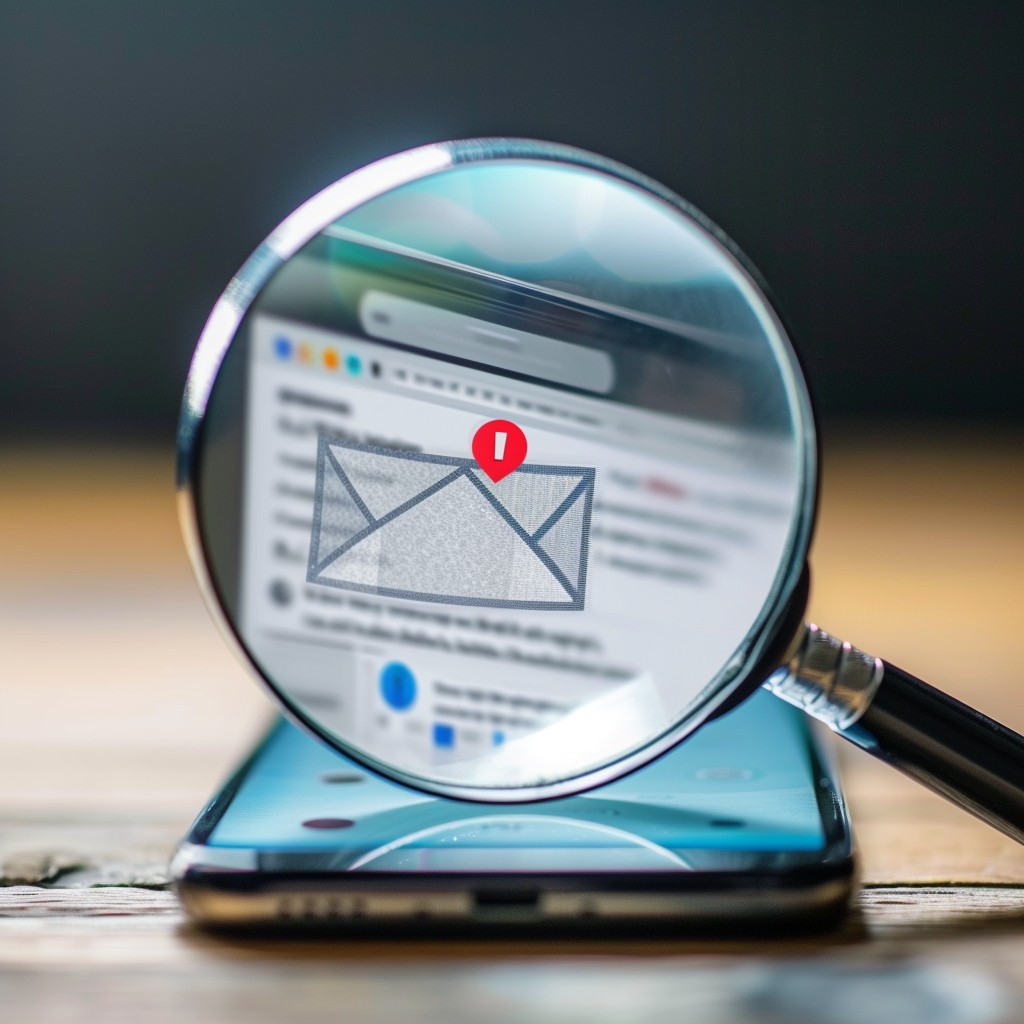
Spam filters, designed to protect users from unwanted and unsafe emails, use criteria like sender reputation, email content, attachments, format, and recipient behavior. If an email meets these criteria, it gets labeled as spam and goes to the recipient’s spam folder.
Why Your Emails Going to Spam?
Now, let’s explore some of the most common scenarios and discuss actions you can take to ensure your messages land in users’ inboxes.
1. Improper Email Authentication
Email spam faces a big issue: improper authentication. Think of it like phone calls – you answer known contacts and ignore random numbers.
Similarly, using authentication technologies proves your reliability to spam filters, acting like a verified caller ID for your emails.
Make sure your emails bear your domain name, even if sent by someone else. Mess up the authentication, and your emails might end up in spam.
Proper authentication with SPF, DKIM, and DMARC proves you’re legit, prevents trickery, and ups the chances of inbox delivery. Skip this, and spam filters might flag your email. In a nutshell, doing the authentication right keeps your emails out of the spam folder.
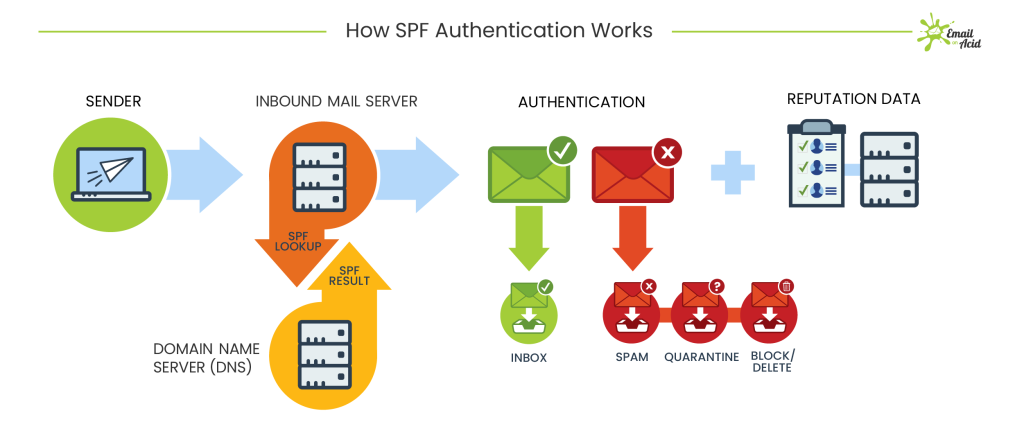
- Ensure your SPF (Sender Policy Framework) is set up correctly to list approved sending IPs for your domain.
- Check if your emails are signed with DKIM (DomainKeys Identified Mail) to secure them from alterations during transit.
- Verify your DMARC setup. DMARC helps prevent scammers from using your domain for spam, but incorrect configurations can send your legitimate emails to spam.
Note: If you are encountering errors like 554 5.7.5 permanent error evaluating DMARC policy, you might find our guide helpful.
2. Low Email Engagement Rates
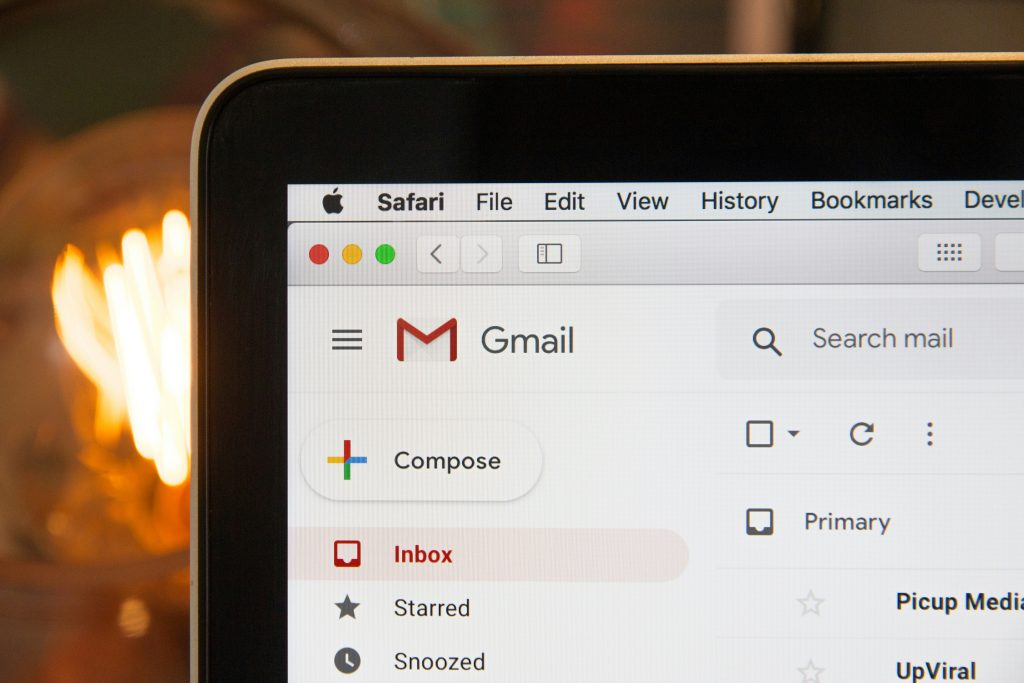
Low email engagement rates can negatively impact your email deliverability because they indicate to spam filters that your emails are undesirable. Top webmail providers consider factors such as open and delete rates when making spam filtering decisions.
If your emails have low open or read rates, there’s a higher chance of them being marked as spam. To mitigate this risk, focus on increasing engagement.
How to Increase Email Engagement Rates?
- Targeting the right audience initially.
- Enhance engagement by sending emails at optimal times, refining your subject lines, segmenting your list, and maintaining list hygiene through regular scrubbing.
- For more comprehensive advice on improving open rates, particularly when sending cold emails, explore our guide on the best time to send cold emails.
3. High Spam Complaints
Experiencing a high volume of spam complaints serves as a red flag for potential issues within your email campaigns. It can indicate that recipients are not finding your emails relevant or that the frequency of your mailings is too high.
Despite having compelling content and explicit permission, recipients may choose to label your email as spam to declutter their inbox. It could be due to forgetfulness about their subscription or a simple mistake.
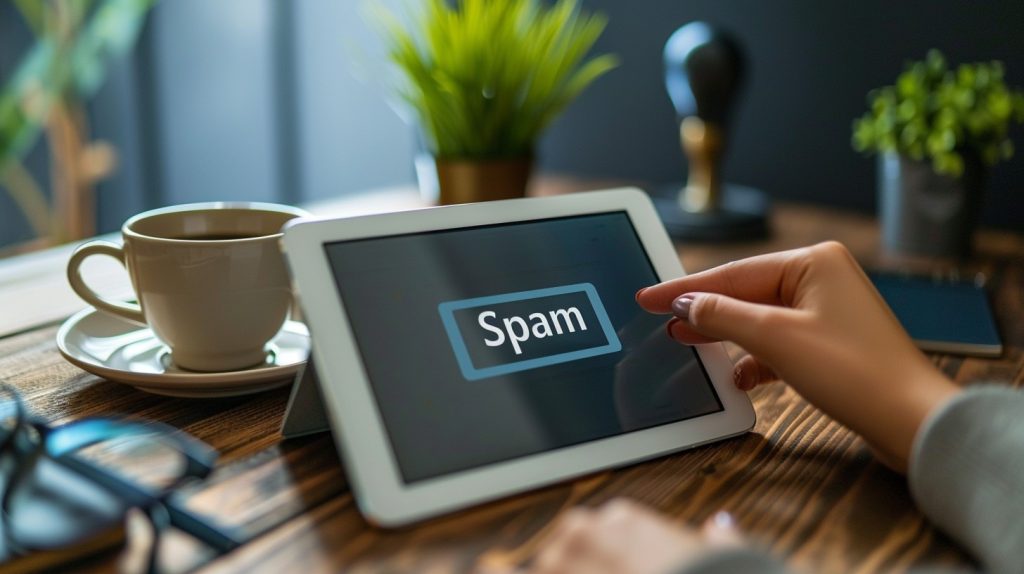
What’s an okay spam complaint rate? Following industry rules, it’s good to stay at or below 0.1%. To break it down, out of 100,000 people on your list, you’d want 100 or less marking your message as spam.
Calculating your spam complaint rate is straightforward. It’s the number of recipients marking your email as spam divided by the total number of recipients.

For example, if you send a campaign to 50,000 email addresses and 500 mark it as spam, your rate is 0.01% (500/50,000).
4. Triggers for Spam Filters
Understanding spam filter triggers is crucial for email marketers. Different factors, such as email content, can activate spam filters and lead legitimate emails to end up in the recipient’s spam folder. Here are some common spam trigger words:

How to Avoid these Trigger Words?
- Check for these words before sending. (Your email provider might have a tool to check)
- Remember, these are general examples and might not be specific to your provider. Reach out to them directly to confirm trigger words
- Avoid hiding important information in images, as spam filters may flag such emails, even if they are legitimate
- Use a tool that check email for spam triggers
Additionally, avoid these other spammy triggers:
- USING ALL CAPITALS
- Excessive use of exclamation marks!!!!!!
- Overloading with emojis ❤✨🔥👍🥺 (a few emojis are fine – just avoid overuse)
- Different Colored Fonts and/or Style
5. Misuse of URLs and Links
Proper URL usage not only improves deliverability but also builds trust with subscribers, ensuring successful email campaigns. Here are two major misusage of URLs and links:
a. Open URLs and Links
Misleading or suspicious URLs have the potential to trigger spam filters, impacting email deliverability. Imagine you run an Off Page SEO Services, and you’re sending a newsletter to attract people with your helpful offerings. When adding a website link to your email, you have two choices:
📧 To see this month’s special deals, go to our website.
Did you catch the difference?
Both emails take readers to your business’s website, but the first one links the word “website,” while the second one shows an open URL (also known as a raw link), a typed-out and linked web address. Skip the second option. Using open URLs can make your emails look like spam to filters.
b. Link Shorteners
Using URL shorteners like bit.ly to track link clicks is common. If your emails use shorteners, spam filters might flag or block them, as seen in Gmail. Don’t risk it. Check if your email provider has link tracking features instead.
6. IP Address and Domain
a. Your Domain has a Bad Reputation
Your domain’s history matters to spam filters. Unlike sending IPs that can change, your domain often remains constant across email providers. Spam filters use your domain reputation to judge your trustworthiness as an email sender. If your domain has a bad reputation, all other domain emails going to spam, too. That is why some company emails going to spam because they share the same domain.

So, maintaining a good domain reputation is crucial to avoid spam issues. You can also check best email warmup tools and consider warming up your domain using automated email warm-up.
b. Your IP Address Is or Has Been Used for Spam
Your email’s delivery success is influenced by the history of the IP address you use to send emails. Just as individuals earn reputations (positive for good behavior, negative for bad), each IP address has a track record monitored by mailbox providers. A history of low spam complaints and bounce rates enhances your IP’s trustworthiness, while a high number of complaints harms its credibility.
When using a shared IP, your reputation is shaped not only by your activity but also by the combined habits of all users on that IP.
The following blacklists are offline and should not be used by any systems:
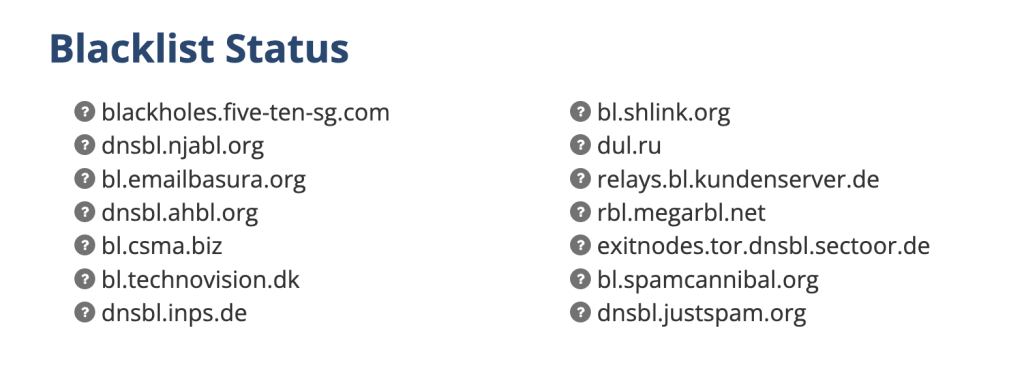
7. Misleading Subject Lines and ‘From’ Information
a. Your Subject Line is Misleading
Misleading subject lines and sender information can activate spam filters, elevating the likelihood of emails being marked as spam and leading to more spam complaints.
Here are instances of deceptive subject lines:
- “Did I leave my jacket at your place?” – Uses familiarity as a trick to appear acquainted.
- “RE: CURRENTLY IN OFFICE” – Doubly deceptive, resembling a reply or work-related email.
- “Urgent – Update your information.” – Misleading urgency.
- “Your Reservation Confirmation”, “Thanks for your order!” – Transactional emails strategy, especially order confirmations, tend to have much higher open rates- they’re opening because they are alarmed.
b. Your “From” Information Is Inaccurate
Ensure the ‘From’ line accurately represents the sender and avoids any misleading details.
It’s against the law (CAN-SPAM ACT) to deceive with your email info like the “from,” “to,” “reply-to,” and routing information.
How can you ensure that ‘From’ Information doesn’t trigger spam?
- Always use a name in the “from” field that your subscribers can easily recall
- Avoid changing it frequently. It could be an individual’s name, your company name, or a mix of both
8. You’re not Adhering to HTML Email Best Practices.
Nevertheless, adhere to certain guidelines when sending HTML emails to avoid them being labeled as spam:
- Maintain a maximum width of 600-800 pixels.
- Ensure your HTML code is clean and straightforward.
- Keep the image-to-text ratio low.
- Optimize your images for efficient loading.
- Avoid using obscure fonts.
- Optimize your email for mobile compatibility.
In the end, consider maximizing the text content in your email and minimizing the use of HTML. Employing your company branding and adding a touch of color can enhance engagement without being excessive.

9. Sending too many Images and/or Attachments, and High Volume of Messages
a. Sending too many attachments
Attachments particularly specific file types like .exe are as a huge red flag for most spam filters due to the potential for malware. If necessary, inform recipients beforehand, and limit the number of attached files. Here is the Maximum Attachment Size for different Email Service Providers:
To improve email deliverability, avoid using attachments. Instead, consider uploading files to cloud storage (e.g., Google Drive or Dropbox) and share the link in your email. This may require a few extra clicks but reduces the chances of your email being flagged as spam.
b. You’re overusing images or not enough text with images)
Images can trouble spam filters in two ways: large images with minimal text might trigger filters, and relying too much on images and too little on text can also raise suspicion.
c. Inconsistent Sending Volume
Sending emails inconsistently or experiencing sudden spikes in volume can activate spam filters. To enhance deliverability, adhere to a steady email-sending frequency and steer clear of abrupt increases in volume, as they may be perceived as spammy behavior.
How Many Emails Can You Send Before Considered Spam?
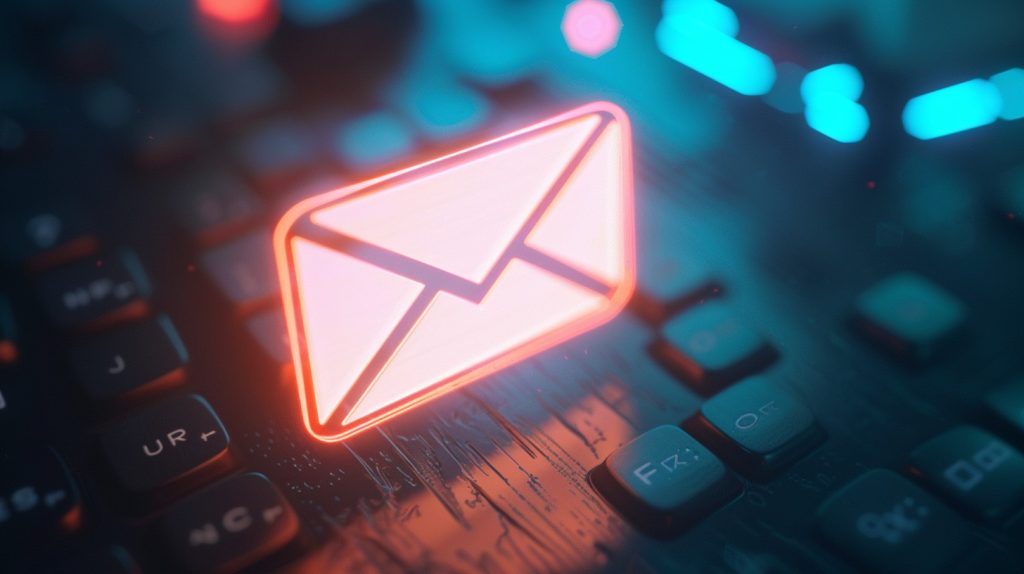
The number of emails that won’t land in spam isn’t fixed and varies based on factors like content, sender reputation, and recipient engagement.
For new mailboxes and domains, it’s trickier. To ace cold outreach or email marketing, avoid a big email blast; start small and gradually increase using throttle sending to steer clear of high spam complaints. This is precisely what automated email warm-up accomplishes.
10. No sufficient information in Email Signature

Make sure to include the following:
- Full Name: Don’t forget this one! We need it to know who’s sending the email.
- Company: Tell us the name of the company you’re from, even if your email is [name]@company.com.
- Role: Let us know your position—it can make your message more credible.
- Address: It’s a legal thing, but also good to show you have a business address (like a P.O. Box).
And don’t forget, especially when sending bulk emails, ensure to include an unsubscribe button at the bottom.
Here are the 5How’s and 1 Why Most Common FAQs with Trusted Email Providers

1. How to fix Gmail Emails Going to Spam?
If many of your emails to Gmail are marked as spam, blocked, or delayed, you should follow the Bulk Sender’s Guidelines. Gmail requires the following:
- Authenticate outgoing email
- Refrain from sending unwanted or unsolicited emails
- Facilitate easy recipient unsubscription.
2. How to stop Google Workspace Emails Going to Spam?
Google Workspace Emails may end up in spam/junk folders due to various reasons like sender spoofing, mass emails, flagged as spam, or a blacklisted domain.
- Configure spam settings using Advanced Gmail security.
- Prevent Gmail users’ emails from being blocked or marked as spam by adjusting settings.
- Authenticate outbound emails by adding SPF, DKIM, and DMARC DNS records.
- Be cautious with outbound message gateways as they may affect DKIM validation.
- Follow bulk message guidelines to prevent Gmail blocking or marking emails as spam.
3. How to Fix WordPress Emails Going to Spam?

Emails generated from within WordPress often end up in your spam or junk folder, They have a plugin helps you sort that out. The default settings of that plugin can often be enough to solve your problem.
When using the default PHP mailer in WordPress, especially on shared servers, emails will often be set to spam or junk by receiving email systems. This can be very frustrating and important notifications can be missed by you or your clients.
4. How to Prevent Emails Going to Spam 365?
This problem happens when Office 365 thinks trustworthy emails are spam, causing important messages to end up in the Junk folder. To address this, users can follow these simple Ways for Emails to Stop Going to Junk Folder in Office 365:
- Configure Spam Filter Policy
- Using Directory Synchronization
- Setting Connection Filter’s IP Allow List
- Verifying Junk Email Setting
- Using Safe Senders List
5. How to stop email from going to junk Outlook?
To prevent Outlook or OWA from placing incoming emails in the Junk E-Mail folder, follow these steps:
- Click on the Junk tool button in the toolbar near the top left of the Outlook window.
- Select Junk E-Mail Options.
3. Click the topmost option, labeled No Automatic Filtering. (Note: If you have specified any blocked senders, messages from them will still go into the Junk E-Mail folder.)

4. Click OK.
6. Why are my Hotmail emails going to junk automatically?
Adjusting the Junk Email Filter can catch more spam but may flag some real emails. To prevent Hotmail from marking certain addresses as spam:
- Click the settings gear at Hotmail.com.
- Choose “View all Hotmail settings.”
- Go to Mail > Junk email.
- Add a sender’s email or domain in Safe senders.
- Click “Add” and save changes.
For entire domains, enter only the text part (no “@”), like “gmail.com” to unblock all Gmail messages.
How to Know if my Emails are Going to Spam?

You may wondering how to know if your email went to spam, and how to check if your emails are going to spam, you can use a trustworthy third-party tool to check your spam score or monitor your open rates.
If your open rates are below 20%, it’s a clear sign that your emails might be marked as spam, it’s a strong indicator that your emails might be heading to the spam folder.
Even open rates ranging from 20% to 35% could suggest that your messages aren’t reaching all of your potential recipients.
In such cases, it’s crucial to assess your messages and identify areas for improvement.
Challenges with Opt-in Transactional, and Promotional Sending
Mishandling opt-in emails can trigger complaints and disrupt your email strategy. Improperly authenticated transactional emails may land in spam, impacting your sender reputation. Sending promos without recipient consent risks being flagged as spam, harming trust in your business emails.

Differentiating between marketing and transactional emails is crucial. Gmail suggests separating them by purpose.
The solution? Two infrastructures with unique IP addresses and subdomains. However, using entirely different domains may raise phishing suspicions, leading to marketing emails going to spam.
For a clean approach, keep them separate using distinct email addresses or, if possible, different domains.
Warm Up Inbox: Your Solution
In wrapping up, the journey of emails landing in spam folders can be attributed to various factors, and we also discussed some solutions on how to make an email not go to spam. Whatever the root cause, swiftly addressing these issues is crucial for optimizing your email returns and maintaining a trustworthy rapport with your audience.
Fear not, though! By promptly tackling these challenges and adopting proven best practices, you can successfully steer your emails away from the spam abyss.
The exciting part? We already have automated email warm-up that will rescue your emails not just from the spam dungeon but also elevate their impact, potentially turning more subscribers into delighted customers.
Curious about the email marketing insights we’ve just shared? Share your thoughts and questions in the comments below, and let’s keep the conversation going!
Frequently Asked Questions
How can I stop my emails going to spam?
To prevent your emails from going to spam, avoid using trigger words in the subject line and body, ask recipients to add your email address to their contacts, use a reputable email service provider, and include an unsubscribe link.
Why are my emails suddenly going to spam?
There are several factors that could trigger this issue. It might be due to content that triggers spam filters, improper email authentication measures, a poor sender reputation, or a flagged IP address. Understanding these reasons can help you take appropriate actions to prevent your emails from landing in the spam folder.
Why emails go to spam instead of inbox?
Factors like poor email authentication, spammy content, and a low sender reputation can contribute to this issue. Email providers use complex algorithms to filter emails into different folders, so it’s important to ensure proper email authentication, relevant content, and a good sender reputation.
How do I stop emails going to junk?
Strengthen your email reputation by using a reputable email service provider and steer away from using words that will raise suspicion from the email providers. Automated email warm up can help you in making sure that your emails will go straight to inbox of your current and potential customers.
Why is my email suddenly getting spam?
Changes in spam filters or algorithms, spam triggers like excessive use of capital letters or too many links, and poor email list hygiene can all contribute. Implementing best practices such as clear subject lines and avoiding certain keywords can help improve deliverability.
Leave a Reply